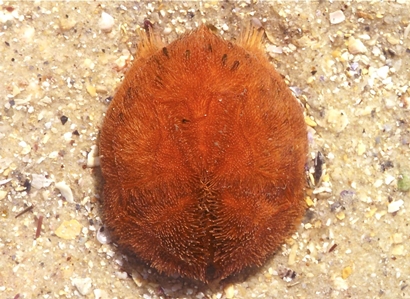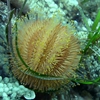General Description
Spines may be orange-brown and the test may be a faint pink. There is a latero-anal fasciole. Test diameter up to 8 cm.
Biology
An elusive species and unlike many heart urchins that bury themselves by slowly sinking into the sediment, this species rocks from side to side whilst excavating sand away from either side as it makes a burrow. It is occasionally washed ashore after stormy weather.
Habitat
In sand burrows, below low tide in shallow waters, to depth of 13 m.
Soft substrates
Coastal shores
Distribution guide
Southern Australia.
Species Group
Depth
Shore (0-1 m)
Shallow (1-30 m)
Water Column
Max Size
8 cm
Diet
Plankton or Particles
Harmful
Spines can puncture skin. Venom status unknown.
Commercial Species
No
Global Dispersal
Native to Australia
Identify
Conservation Status
- DSE Advisory List : Not listed
- EPBC Act 1999 : Not listed
- IUCN Red List : Not listed







